Cruising Portugal: Viana do Castelo to Lisboa
Aveiro,
Berlenga,
Cascais,
Figueira da Foz,
Leixoes,
Lisboa,
Nazare,
Peniche,
Porto,
Portugal,
Sailing,
Viana do Castelo

Viana do Castelo surprised by being more than just a check-in point — the town is actually very neat. Perhaps slightly too neat, everything was really nice and clean, they even had special rubbish bins that were chutes to large underground waste containers, preventing the bin smell that was so common in many of the towns we'd visited.
We walked around town a little, which helped Elvyra discover her addiction to Portuguese pastries (Pastel de Nata) and rediscover mine to coffee. Then we took a funicular ride up the mountain to a large and suspiciously modern looking church up a hill with a fantastic view of the entire river valley. The celtic ruins seemed interesting too, but without any signage at all we were left to guessing what each pile of stones might've once been for.
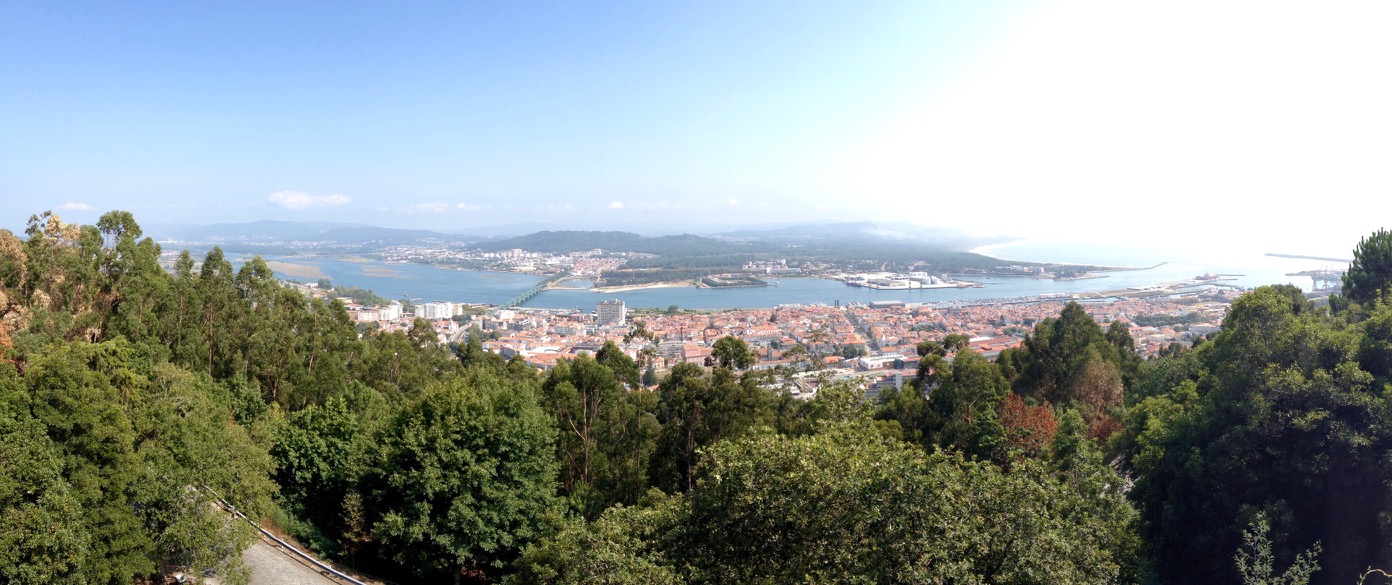
Eager to see Porto, we sailed out of Viana two days later, but not without some excitement. The marina is in a sheltered basin on the side of a river. We were leaving on the ebb tide, where the current flows down the river. This makes sense, as it would sweep us down with it in the direction we wanted to go. Heading out into the river, I glanced at the chartplotter for a moment and when I looked up the current had grabbed the boat and was rapidly dragging us sideways towards the pillar of the open swing bridge we were passing through. I quickly shoved the throttle lever all the way forward and for once was very glad we had been dragging a huge three-bladed propeller through the water, slowing us down while sailing but giving us excellent thrust under engine. The motor roared, spewing a cloud of white smoke out of the exhaust and we shot forward into the river, clearing the pillar and the waiting pontoon full of moored catamarans by the width of a fender.
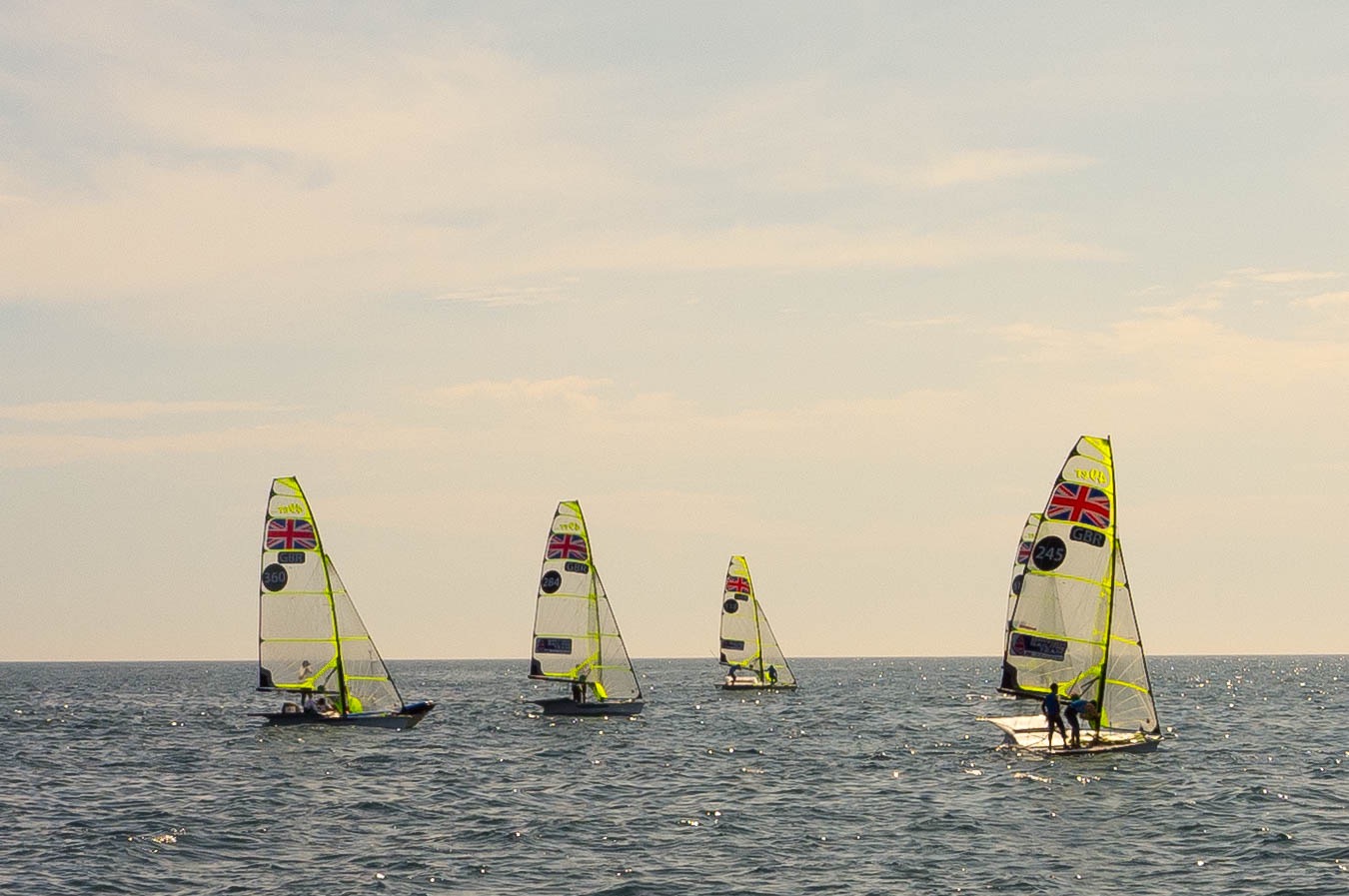
After this initial excitement, we soon left the river behind and had a pretty quiet day motoring southwards. This was because instead of the forecast NW, the wind came straight from the south at about 10 knots - not particularly helpful for sailing. Motoring is boring, so to pass time we put the portable speakers in the cockpit and turned up some music (see video at the bottom). About six hours later, we spotted Leixões' harbour walls. Also spotted a whole bunch of small racing dinghies with very fancy looking sails and colourful flags printed on them. As we later learnt, we'd run into the 49er world championships taking place the same week we were staying. Several country teams were out practising, each with an accompanying RIB, and swarms of dinghies under sail, RIBs, dinghies being towed by RIBs and a broken down RIB being towed by another were buzzing in and out of the harbour, along with a big fishing vessel and us. Being under engine ourselves, we had to give way to several of the dinghies under sail, which was tricky as they wove around tall harbour walls affecting the wind.

Leixões is now the port of Porto, which is confusing, because Porto already means port, but no longer is one. The new port is slightly north of the Rio Douro on which Porto lies and offers a rather industrial setting. The marina inside was small, narrow and brimming with sailing dinghies and support RIBs, which were being hauled up and down a nearby slipway. We squeezed into the last available berth and checked in at the office. Not cheap, but we had to leave the boat somewhere while exploring Porto and Doura marina, the only other option, was out of our price range. On the upside, the local chandlery was delivering a complimentary bag of fresh bread to our boat most mornings.

There was a bus stop right in front of the marina, which we hopped on to the next day. The Portuguese seem to be smart shoppers and we counted no less than six Lidl stores on the 40 minute ride into town. We started at a monument where upon a tall column a Portuguese lion was stomping on a French eagle. We wandered around for a long time, despite the heat. First down a strange valley with abandoned hotels bordering on historic river valley gardens and small houses built into steep hills that were still populated judging by the laundry flying in front of many. From there we walked along the Rio Douro to the crammed tourist area of town, bought nothing except a bottle of water, visited a Port (the wine) museum and had some cod and chips, which was tastier than the english variant but also full of fishbones.
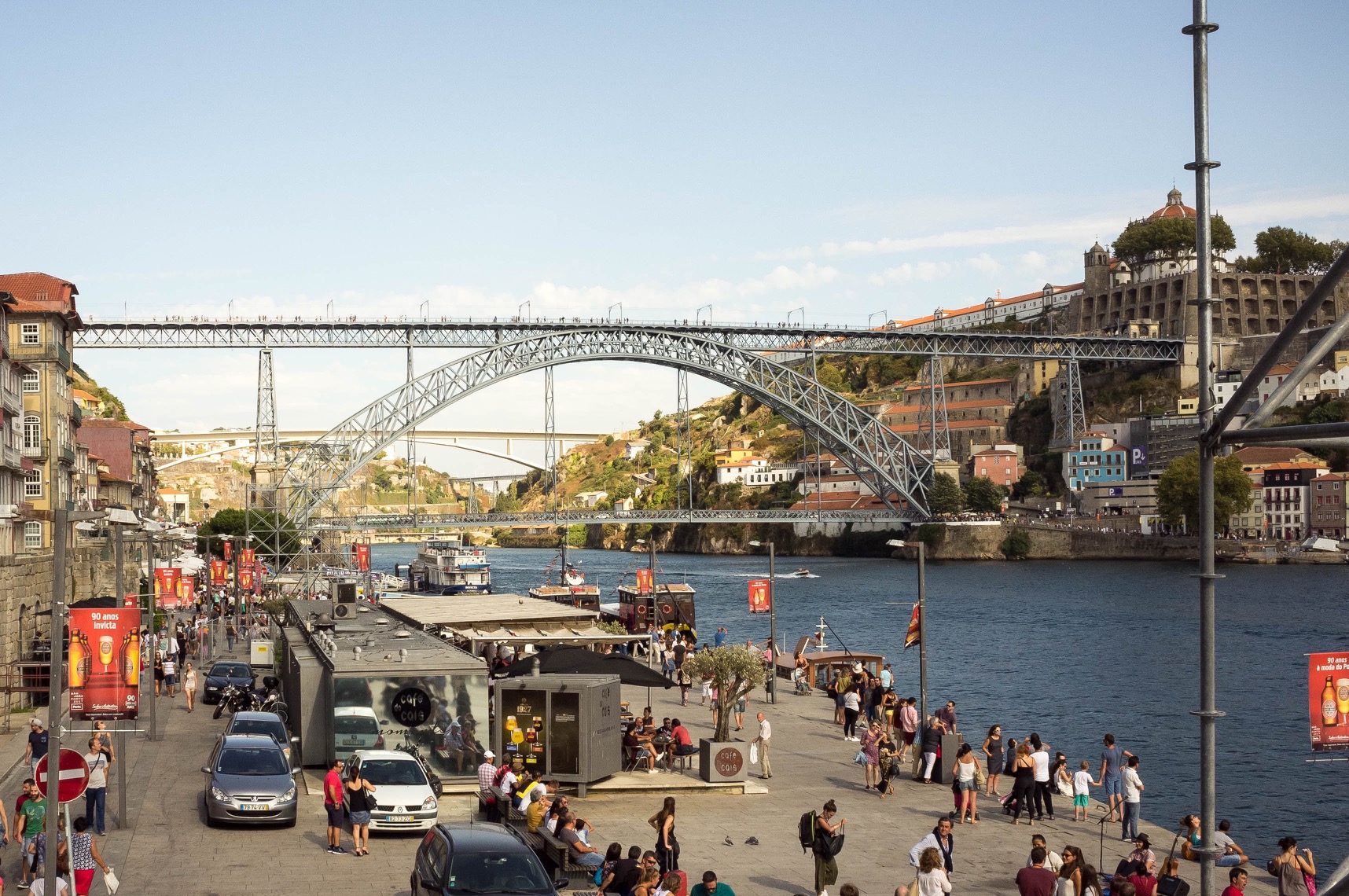
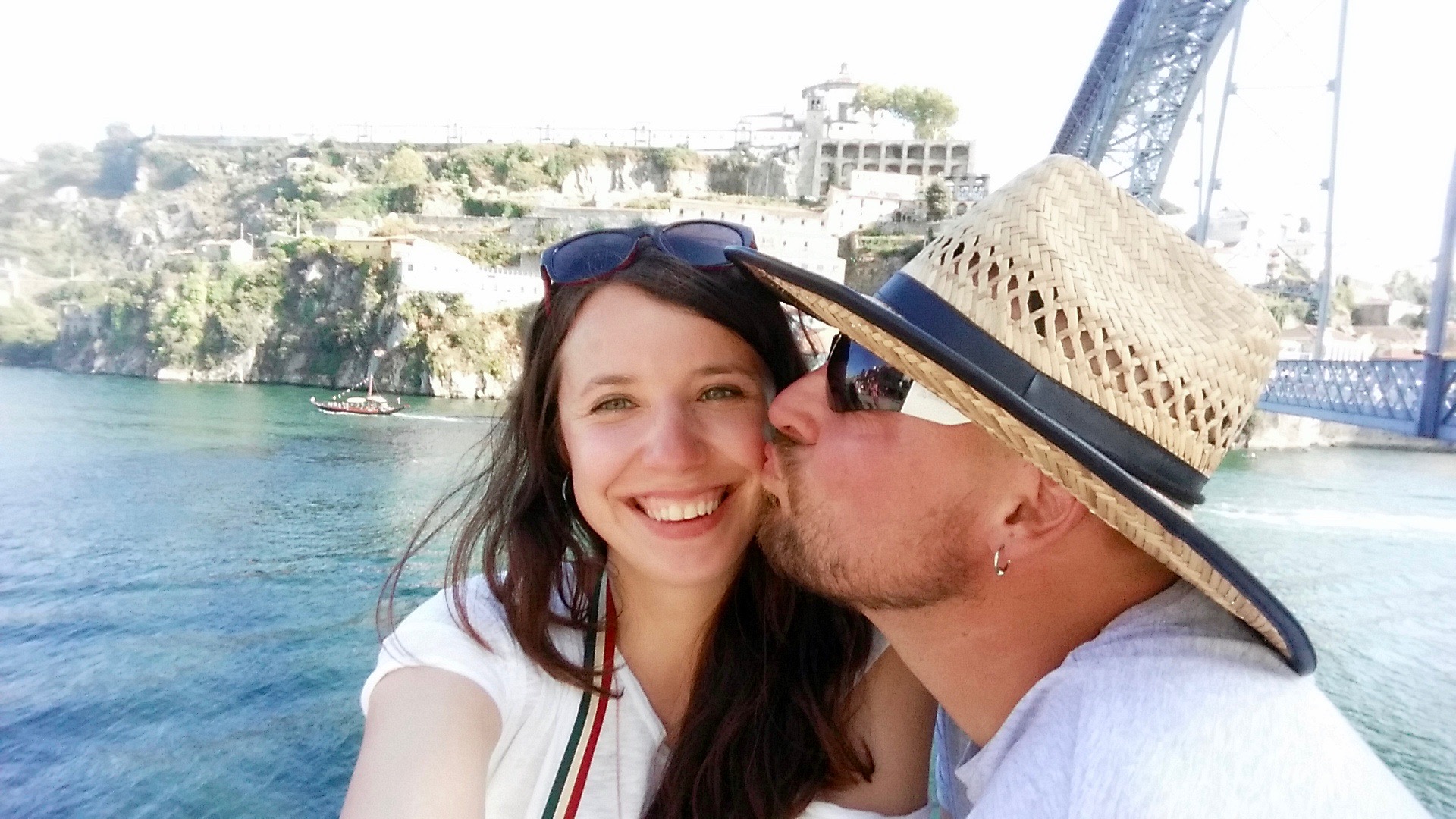
Exhausted from all the walking up and down hills, we returned to the bus station, only to find the bus was 40 minutes late. We noticed one of the many Lidl signs nearby and decided to spend the time by stocking up on some essentials, which lead to us missing the bus - it must've caught up some of the delay meanwhile. The next one wasn't for another hour and of course also late. After a long wait and a longer ride we finally returned to the boat and crashed into bed. Well, right after tasting the Ruby Port (a fortified wine) we bought at the prestigious supermarket.
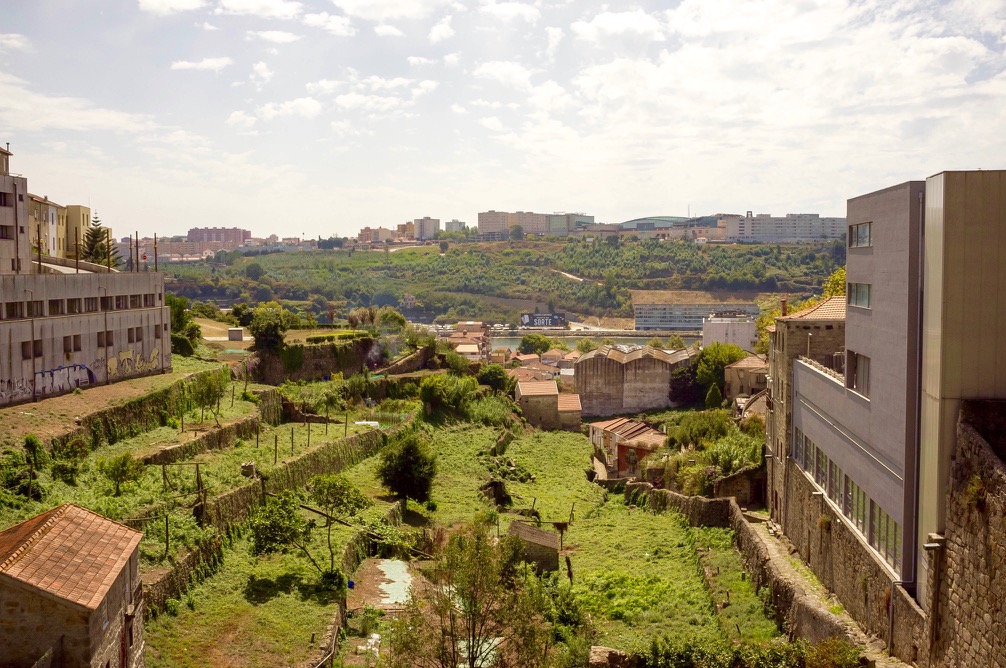
The next day, Elvyra was feeling a bit under the weather (not related to the small glass of port) and so we called a rest day. I took a walk into the nearby Matosinhos district to buy some essentials and stumbled upon a large municipal market, which was selling very tasty fresh vegetables and fruit for very good prices. You could even get live chickens, geese, pigeons and rabbits there, and of course a huge section of fish stalls. Back at the boat I had to fix the Toshiba tablet we use for cockpit navigation. It had gotten a bit wet last time I washed the boat. Not in the cockpit, where it lives in a waterproof bag, but while peacefully resting on the navigation table below. A portlight had not been properly closed and while hosing the salt and dust off the boat a good portion of water had leaked in and soaked both laptops, which were cleverly resting on top of one another. The Lenovo shrugged it off, but the Toshiba started acting weirdly, switching off or crashing often and after a day inside the bag it had condensation inside the display. After way too many hours of fiddling, I'd stripped it twice, dried it out, cleaned contacts and it is now working properly again. Some lessons were learnt, including making damn sure all the portlights are properly closed before washing the boat (it hasn't rained in weeks here) and not storing two important bits of kit in the same place.

After resting, we ventured into Porto again, this time by Metro, which despite the longer walk to the station turned out to be a much smarter idea. Porto has a nice, modern metro, which got us there quicker and cost the same as the slow, unreliable bus. This time we wanted to see the Livraria Lello, a famous bookshop. Unfortunately it turned out to be a horrible tourist trap. They were asking for an entry fee of €4 per person. This was quite confusing, as there was no book shop in this place, just a gift shop selling a bunch of Harry Potter plastic toys, a luggage locker and a ticket office with a big queue. We soon figured out where people went after buying their tickets - to the actual book shop a few doors further down the road, which was tiny and packed with more humans than books. Since neither this nor the idea of paying an entrance fee to enter a shop appealed, we abandoned the idea and instead explored the area nearby, which seemed overtaken by tourist traps much like the already mentioned along with some very dull London fashion stores (and I thought I'd escaped that place).

We eventually fled all this madness into some side roads where the locals were hanging out and guzzling beers and had our first Francesinha in a small restaurant away from the tourist buzz and prices. The Francesinha (or drowned sandwich, as I like to call them) is worth writing about. To create one, first you make a sandwich with all the things that go into one: pork sausage, ham, cheese, lettuce, some bread, butter, and so on - this part can vary. Then you cover the thing entirely in an enormous sheet of melty cheese. And finally you drown it in a mix of tomato sauce and beer and serve it on a large plate. The melted cheese will enclose the sandwich and hang over the sides far enough to form a seal against the plate, so the sauce will not turn the bread into a soggy mess. And just because a huge drowned sandwich covered in cheese and sauce is obviously a bit lacking in calories, they serve the thing with a big plate of fries and a beer on the side. Thoughtful.
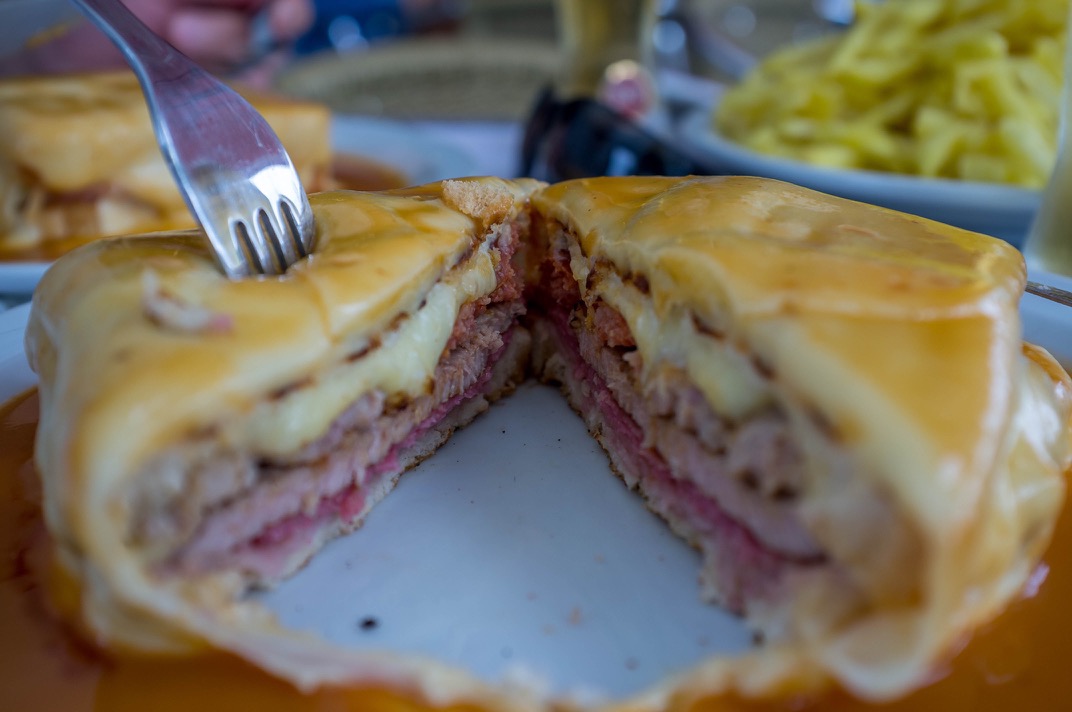
After spending entirely too many days in Porto (mostly because we really liked it), we realised we were a bit behind schedule and needed to hurry up to make it around the corner into the Algarve by mid September. The next stop was to be Aveiro and so we set off south once again. After an okayish downwind sail we turned upriver into Aveiro and were immediately surrounded by a large number of small powerboats, drifting around in the strong current with their large outboard engines idling. In each were one or two people with fishing poles. The river current was constantly sweeping them out of position and they would regularly reposition themselves, often across the river in front of us. When they were done, the fast planing boats would shoot past us back to their moorings while we struggled upriver with the engine revving hard. Some way up the river we turned into a secondary breakwater - our anchorage for the night. We'd beaten a catamaran to the river mouth and overtaken a dutch sailboat on the way up the river, so we carefully picked a spot to drop the hook. The bay looked large, but was mostly covered with a large sandbank, which we nearly ran into while scouting around. We found a good spot, only to be crowded by the arriving dutchman and the catamaran (who should've realised he could've safely anchored on top of the sandbank instead of squeezing in between us).
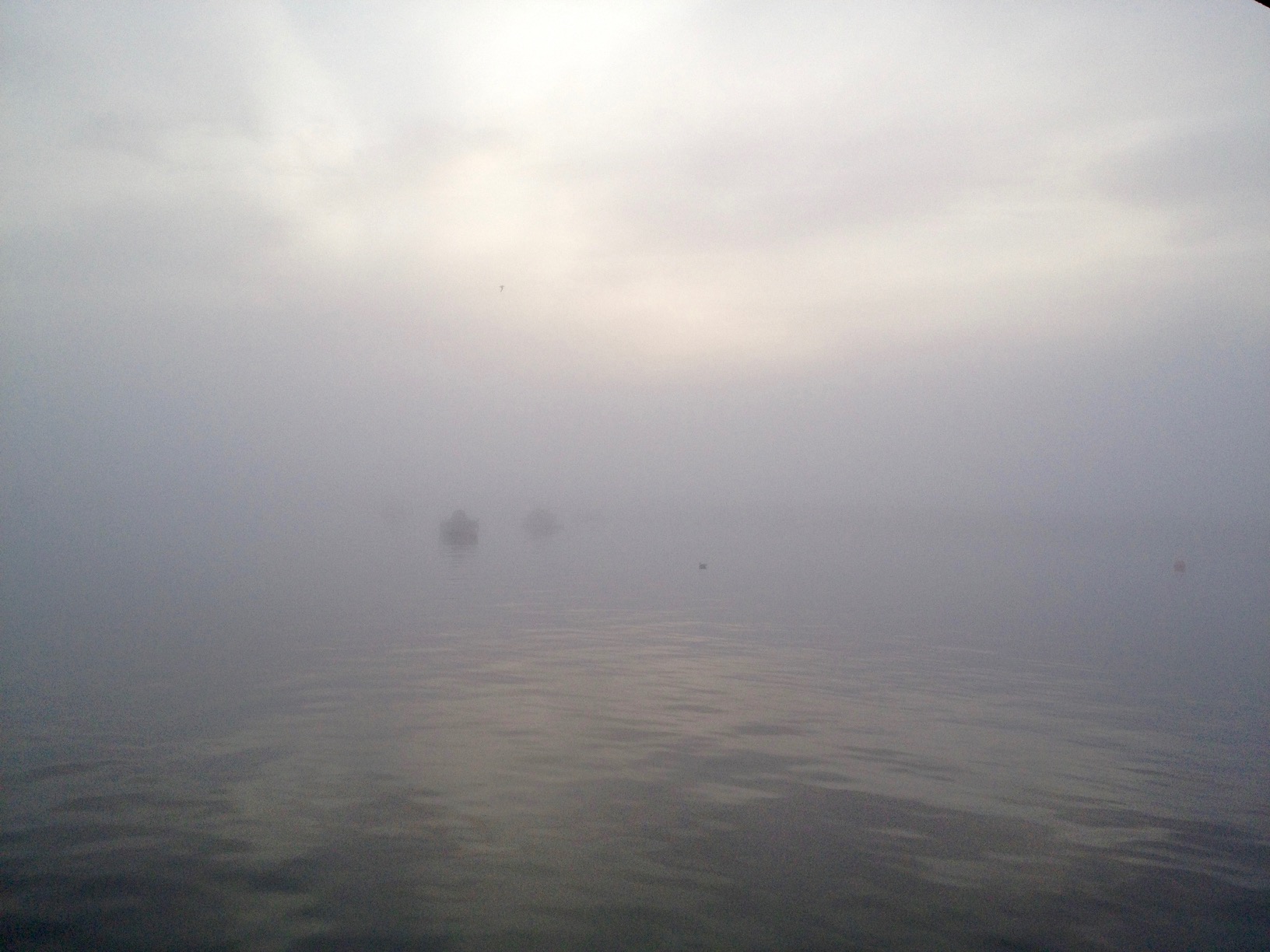
The anchorage was the best sheltered we've had in a long time and we slept very well. The morning fog was so thick we couldn't see the boats next to us. After waiting for it to lift the tide had turned and we were again motoring against the river, this time with the tide flowing upriver and us struggling to get out. We made it and motorsailed in light airs to Figueira da Foz, 35 miles south. More fishermen in small motorboats and another river to go up, with somewhat weaker current this time. It was Sunday and the marina receptionist on duty seemed somewhat overwhelmed by his job. He wasn't interested in our paperwork and just took the boatname, gave us a keyfob and told us to pick a spot somewhere over there. We found one next to a friendly Danish cruising couple and others soon arrived, all on their way south. We spent two nights here, although the town wasn't particularly interesting we needed to do laundry and it did have another municipal market. There was a huge beach, but was very built up and full of casinos and associated gambling addicts. This was the first time we've seen homeless people in Portugal. Unusually, some of them seemed to have furniture - one had an antique looking nightstand next to his sleeping bag, another had a chest of drawers.

Upon leaving, we filled up on Diesel at the marina shop, but the office was locked despite the posted office hours. The Danish boat also wanted to leave and tried ringing the marina phone and calling on the VHF radio, all to no avail. After half an hour of waiting, I got fed up with this and decided to shove an envelope with some cash and "roger", our keyfob under the office door and just sail off. I was about to do so when the guy finally came running, somewhat apologetic. Soon we were underway, heading down the river again.
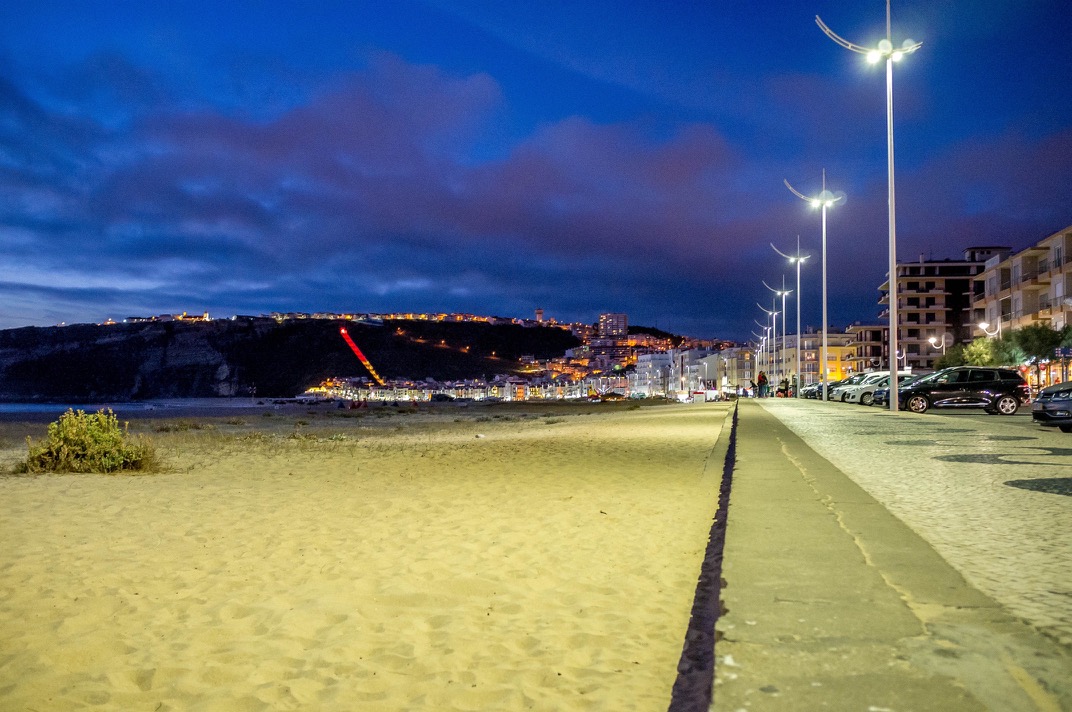
We turned south towards the surfer paradise of Nazaré. The Danish couple were right after us in their Hallberg-Rassy 38, a boat that had basically served as design template when Bavaria created our 40 Ocean. So it was fun to see that we could outsail them by a small margin, tracking the increasing distance on AIS. Arriving at Nazaré was interesting. As soon as we entered the breakwater, the wind gusted over 25 knots all of a sudden (similar to what happened in Viana). Someone was already waving from the marina pontoon, but pointed at a terrible location - a narrow finger pontoon we'd get blown off from, with ladders and pilings sticking out on the downwind side. I decided we did not want to try that and shouted if he had another spot. He said I could try the hammerhead on the other side, so we moored there, which was far less challenging. The next boat that came in proved my decision had been right - I didn't see how it happened but they ended up stuck diagonally in the tricky berth, with crew trying to hold the boat off one of the ladders - and they had 5 more crew members than we did.
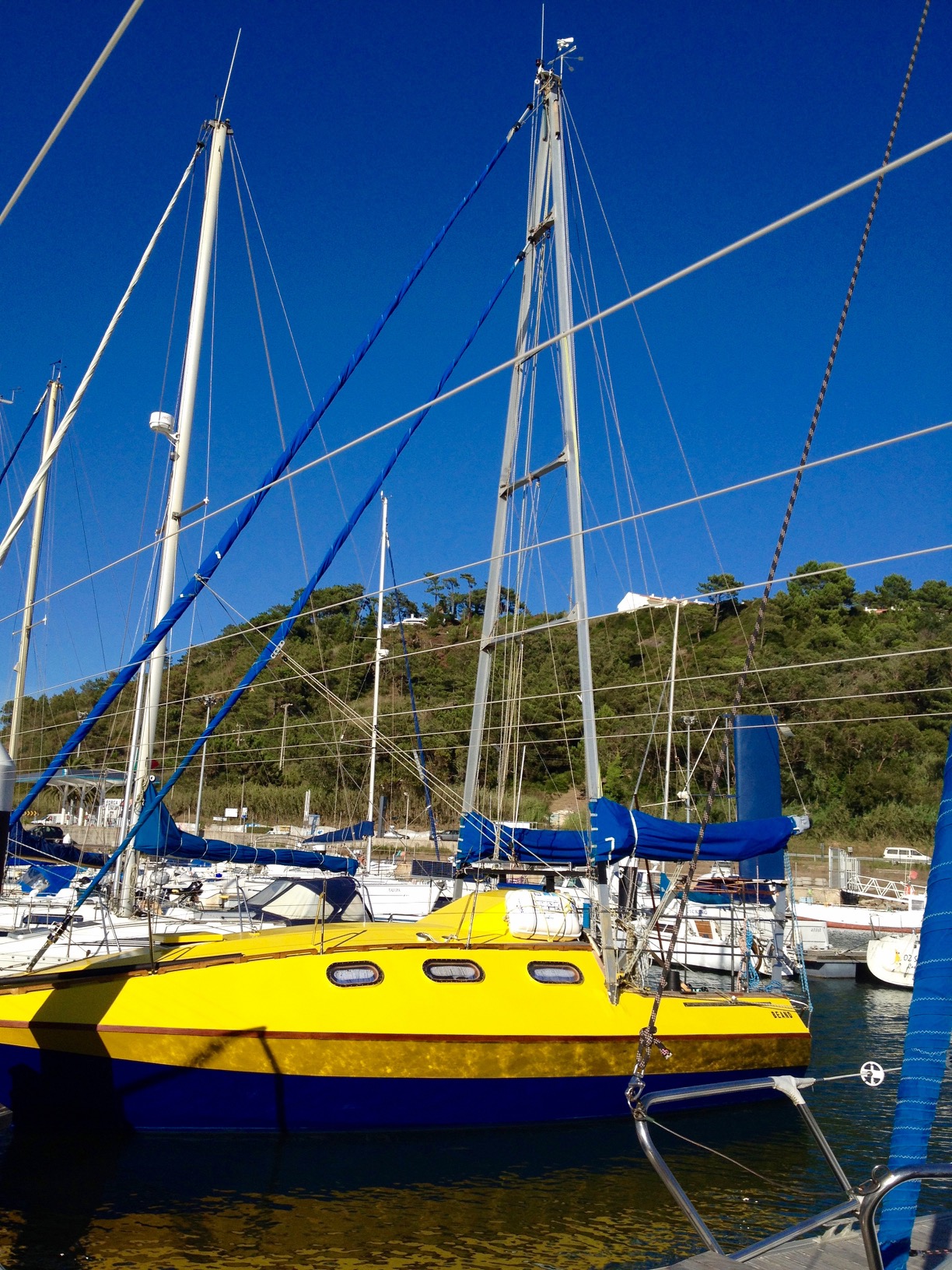
Nazaré was a thoroughly strange place. It used to be a small fishing town, but then surfers discovered it for themselves due to a strange geographical feature at the Praia do Norte just north of the town. An underwater canyon pushes the waves up to phenomenal heights and makes this one of the worlds most popular (and deadly) surfing spots. Now the town is overrun by surfers, tourists, apartments, restaurants and souvenir shops, but also has a large area for campervans and what looked like a small shantytown, complete with surfer dudes hanging around bonfires at night. Even the marina office employed an aging surfer dude with about three teeth left. Whilst I was filling out forms with the receptionist, he stuck his head into the office and actually shouted "Whazaaaaaa???". His job seemed to be explaining how to open the security gate with a keycard, and he took it very seriously indeed. The only other noteworthy thing about Nazaré were the large rat poison boxes tied onto the pontoons all over the marina. Between that and the town we were happy to move on after some sleep.
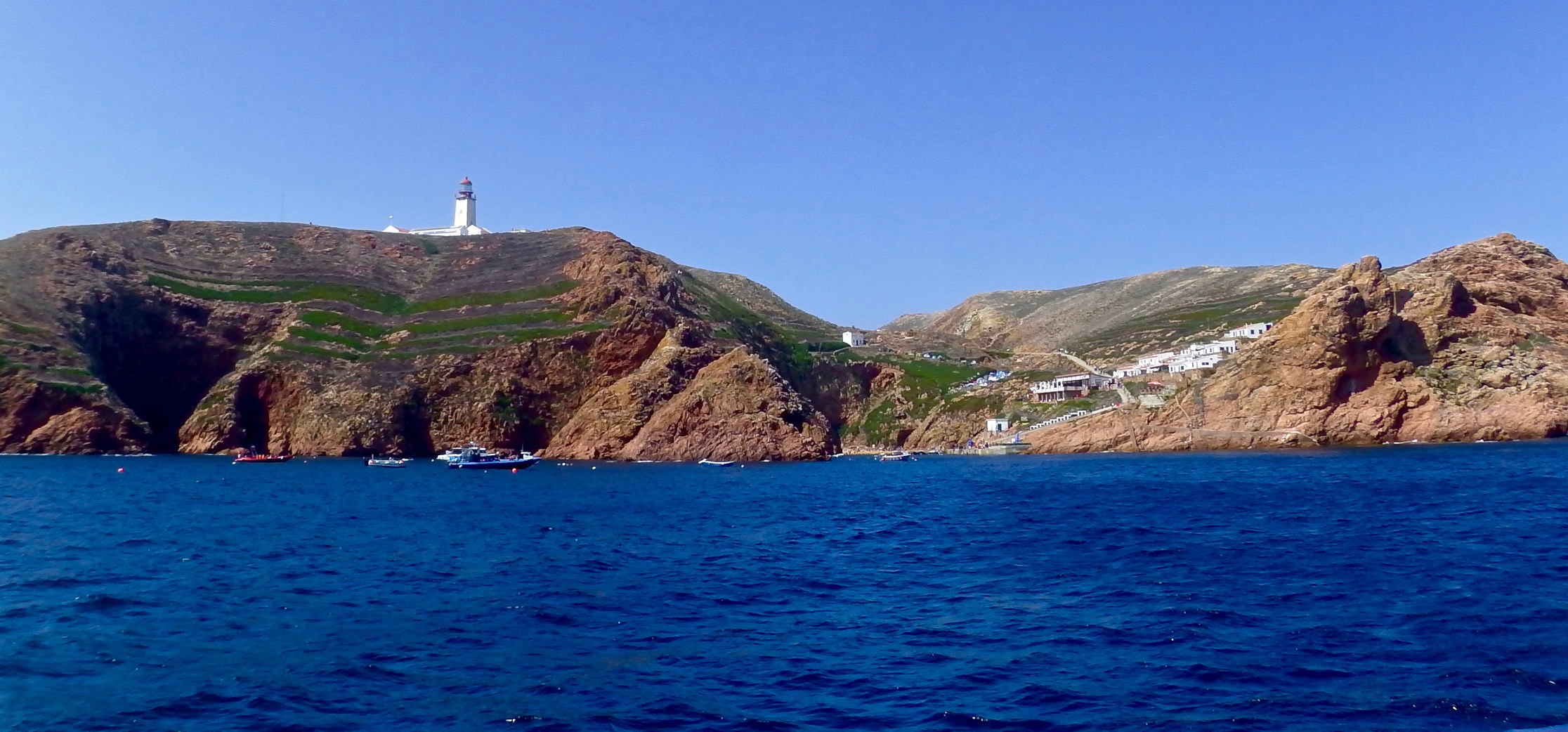
We had hoped to anchor at Sao Martinho, a small cove with a sandy beach promising sheltered, warm waters for swimming. Unfortunately the swell forecast was well over 2m and thus that idea was out, as the cove was too shallow to safely enter in such conditions. The morning fog set in as soon as we had left Nazaré behind. So we headed straight out to sea, aiming for the Berlenga islands, a nature reserve and potential anchorage. The fog lifted around noon and after being stalked by a young seagull for an hour and finally seeing our first Portuguese dolphins, we made it to the largest island. Alas, the island was too small to protect from the swell. We anchored for lunch in a deep 15m, but the boat was rolling heavily and we were worried about the anchor in the rocky bottom, so we left as soon as we'd eaten and headed into nearby Peniche. Getting there somewhat late, the marina pontoon had only one spot left, at the outermost corner of the outermost pontoon. The wind was gusting again and we moored up with some help from another boat. A maritime police officer was already waiting to check our paperwork on the pontoon. After this I rushed to the office before it would close. The receptionist was extremely friendly and helpful. He even looked up a weather forecast for the next day and warned us about a wind acceleration zone around the next cape. We wandered into town, which seemed to mostly have seafood restaurants, found a supermarket and stocked up on food. Unfortunately the marina had no Wifi and was plagued by swell and fishing boats racing in and out of the harbour, ignoring the 3 knot speed limit and kicking up a huge wake. Plus sirens going off to call the fish sorters whenever a boat arrived, which went on all night.
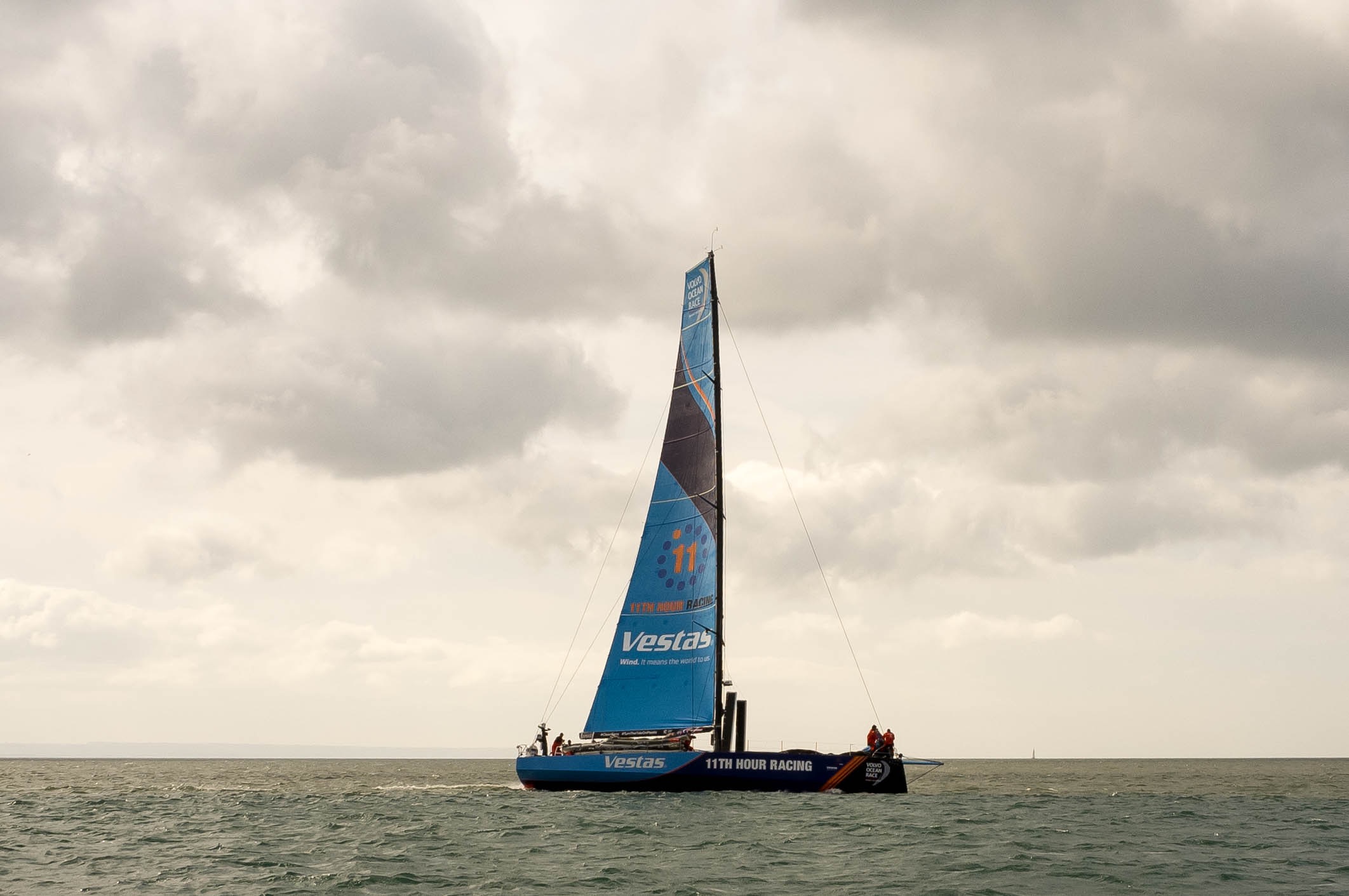
We hadn't slept much and were in for an exciting sail. This time we couldn't complain about lack of wind - there was rather a lot of it. Mostly around 25 knots, which made for great downwind sailing, although when we rounded Cabo de Roca it blew up to 37 knots for about 15 minutes - despite having given the cape a wide berth after the warning from the marina guy. We made a respectable 6.62 knots average speed from Peniche to Cascais. Cascais is a town some 30 km outside Lisbon. It has a marina, but it's clearly aimed at the super-rich that make the town their home, and was far outside our price range. Conveniently, there is a large beach nearby off of which everyone else was anchoring, so we joined the "poor" crowd. The anchorage was not the most comfortable, with some swell and strong local winds in the afternoon and early hours of the night. Not helping was the "Seabar", a large party catamaran complete with giant speakers onboard. When they left, the clubs at the beach began to fire up their sound systems to take over.
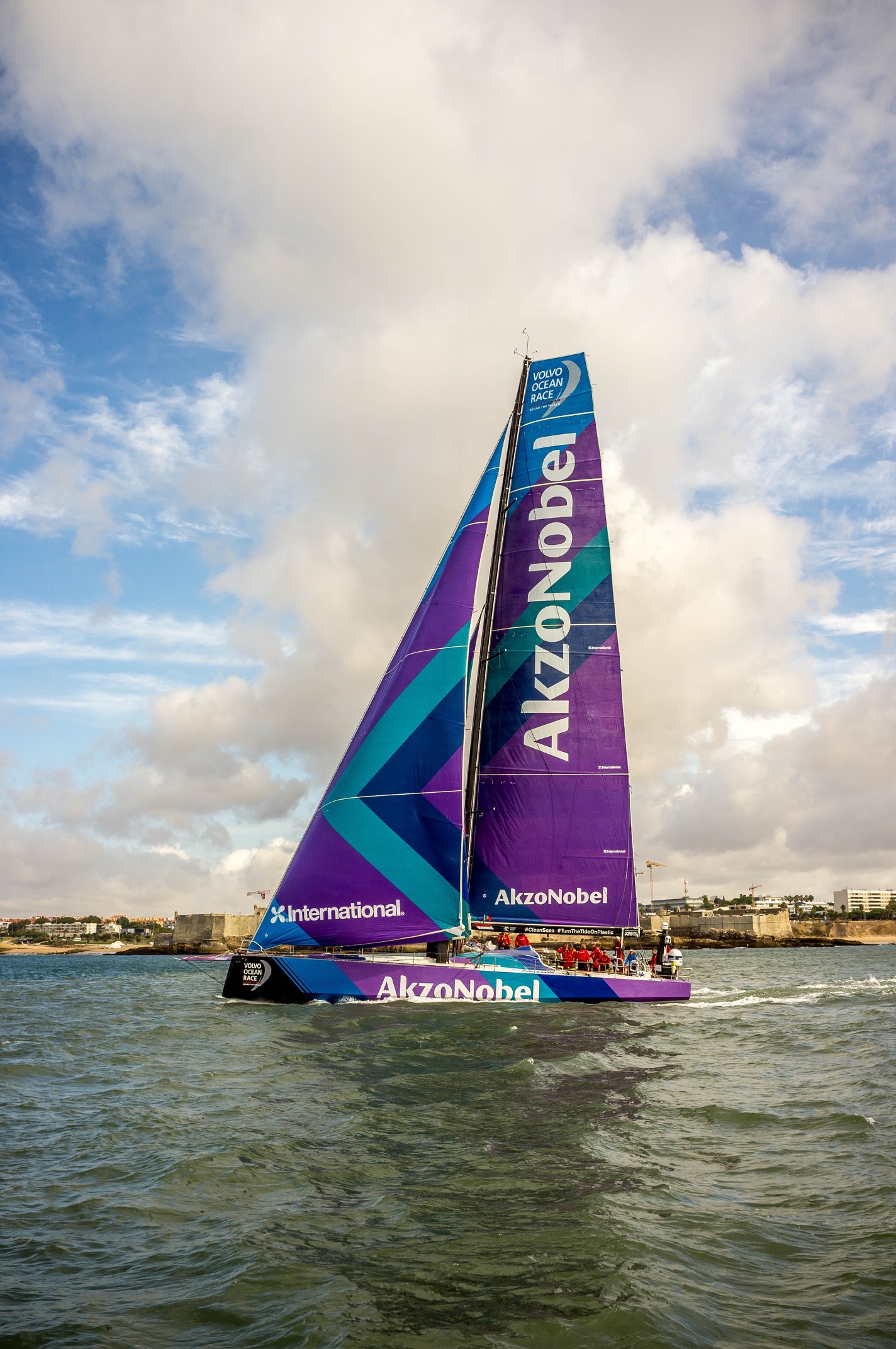
The next morning we phoned around Lisbon's marinas to inquire for a berth. Our preferred choice, Doca de Alcantara was full. So were the other four APL marinas, and the one at Oeiras (far out of town anyways) and the former expo site in the north had no room either. Bummer. We decided to stay another night at Cascais and the next morning a grumpy man at Doca de Alcantara just told me on the phone: "You can come". We quickly finished breakfast, stowed everything and hauled up anchor, motoring the 20 miles up the Rio Tejo, which alone is a trip worth seeing. We passed under an extremely noisy road bridge (there is actually a marina directly under it - luckily one of the full ones!), the Torre de Belem, several famous monuments, museums and monasteries, left 5 of Lisbons 7 marinas laying to the left, passed a cargo port and a cruise ship and finally made our way into Doca de Alcantara.
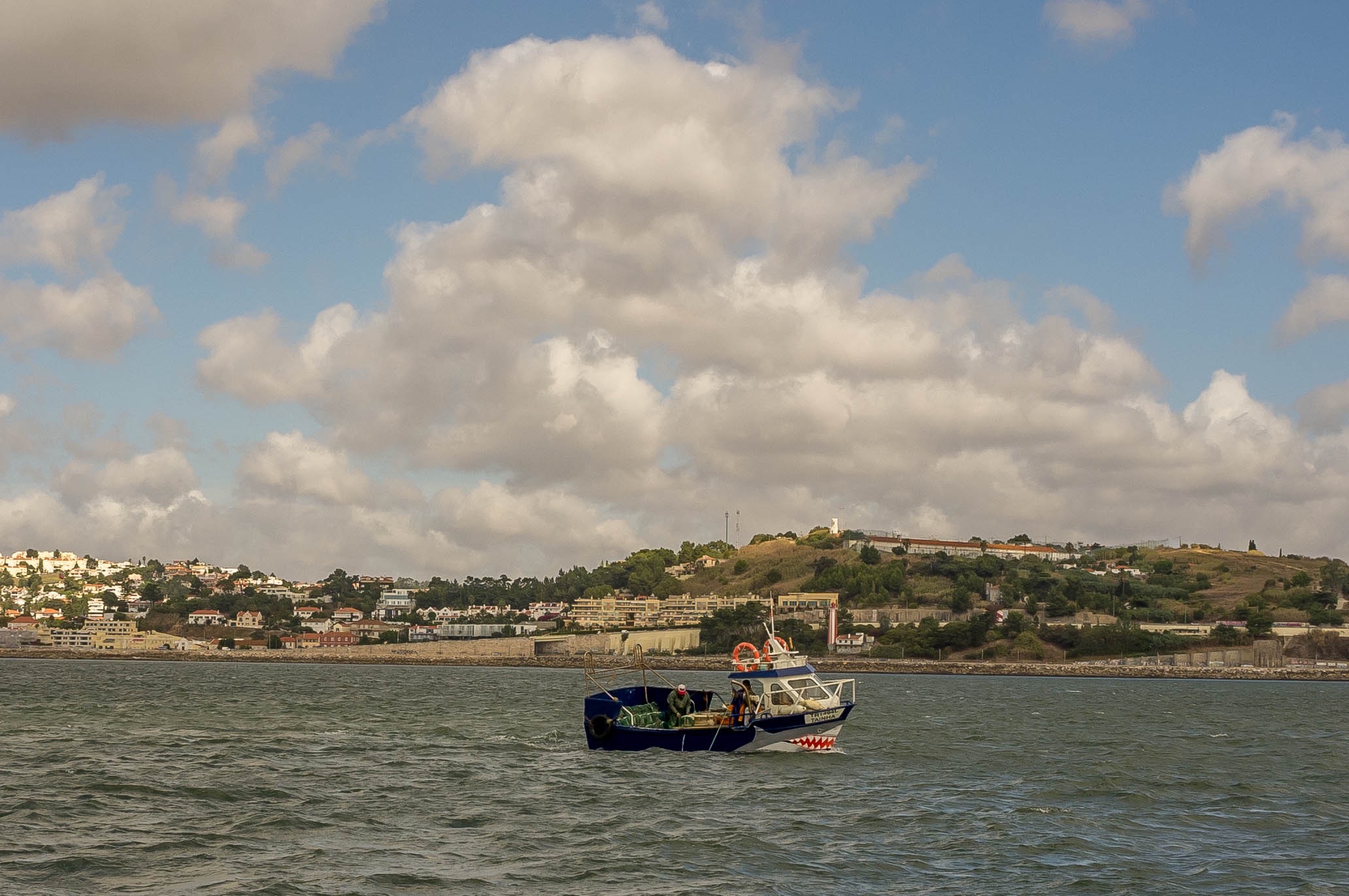
The swing bridge was already open. The marina itself did not have VHF radio, which is most unusual. As it is a huge 400 berth marina, we had no idea where to go and most berths were indeed full. We moored up on an empty tourist tripper pontoon and asked a man in a Musto hat for directions. He confirmed the marina had no VHF and said to walk along the quay to the marina office half a kilometer down that way and ask there. I left Elvyra to guard the boat and followed his instructions. Grumpy man was in the office and showed me on a faded old map of the marina where our free berth was, then told me to not come back before 3pm because he was going to lunch now. I hiked back to the boat, we cast off and counted pontoons to find the right one, as none of them were labeled. It didn't help that the faded map I'd been shown was outdated, but we did find the berth, moored up, plugged in and set up the lines and fenders for a longer stay. After three I went to the office with my folder of paperwork, none of which grumpy man was interested in. Instead he shoved the form that in every other Portuguese marina the receptionist had filled out and threw a pen on top of it. I thanked him kindly, filled it out and made our boat a little shorter in doing so, at least on paper, so it would fall into the 12m price category.
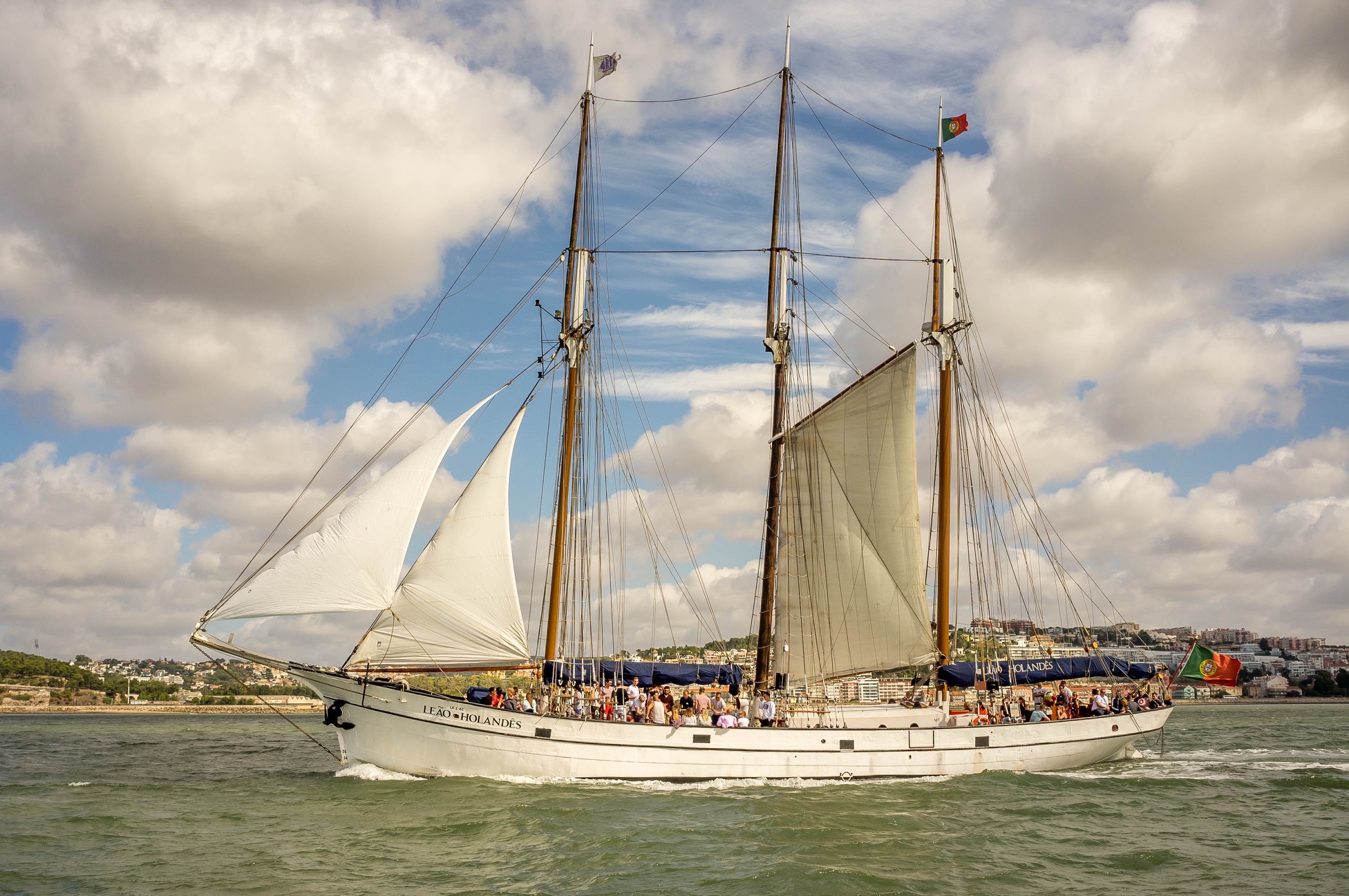
We had caught up with our schedule by rushing through a couple places that didn't seem very interesting anyways, and arrived in Lisbon with some time available for exploration.